
4 Office Exercises to Reduce Neck and Shoulder Pain
May 8, 2020
Photo by Joyce McCown on Unsplash
Most of us have been told at some point in our lives to, “sit up straight.” We’ve even had some go as far as telling us that “you’ll get stuck like that.” In today’s world where most of our day is spent sitting and/or in front of a screen, having “good posture” seems like an impossible feat. Some of us try to “straighten up” in order to have good posture but are unable to achieve proper positioning due to joint stiffness, tight muscles, weak muscles, and reduced muscle endurance. There is a vast array of exercises you could perform to specifically address each of the mentioned problems, but we are going to focus on 4 simple exercises that have been proven to address joint stiffness and muscle tightness in your neck, shoulders, and upper back.
Exercise 1: Cervical Retraction
Purpose: To improve how the joints in your neck move and to reduce forward head posture.
Instructions: Sit upright. Pull your chin back like you are attempting to re-align your head over your shoulders. Hold 2 seconds and then relax.
Frequency: If you are dealing with consistent neck soreness, you can perform these as often as 10 reps every 2-3 hours during the day or 5-10 reps every hour during your workday.

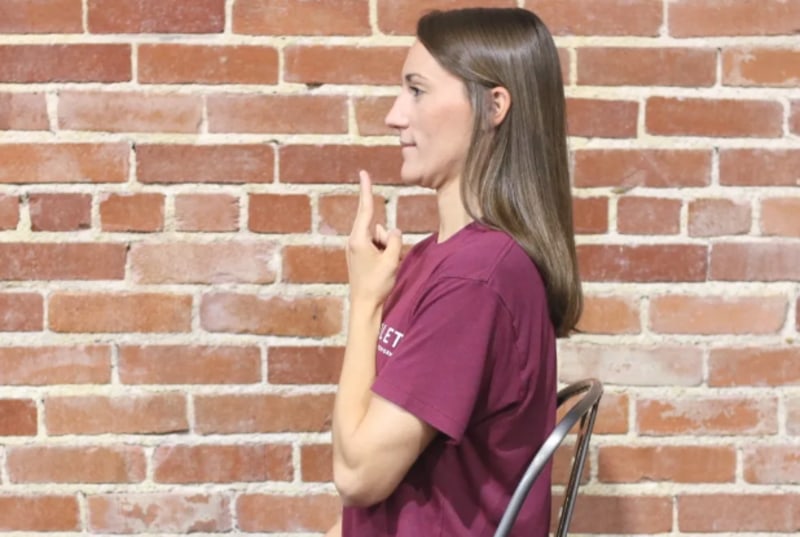
Exercise 2: Thoracic Extension
Purpose: To improve how the joints in your mid and upper back move and to enable you to “sit up straight.”
Instructions:
A) With Foam Roller: Place your bottom on the floor and hands behind your neck at the base of your skull. Lean back over the foam roller, breathe in-and-out, move forward and backward to hit different segments.
B) Seated: Sit upright and place your hands behind your neck at the base of your skull. Bend backward at your upper back pointing your elbows towards the ceiling. Hold 2 seconds and return to neutral.
Frequency: 10 reps, 2-3x/day if using the foam roller OR 5-10 reps every 2-3 hours during your workday if performing while seated.
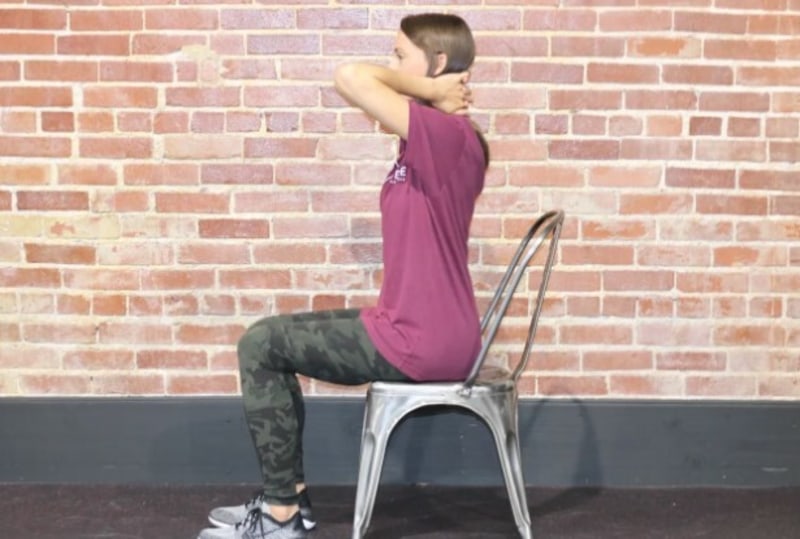
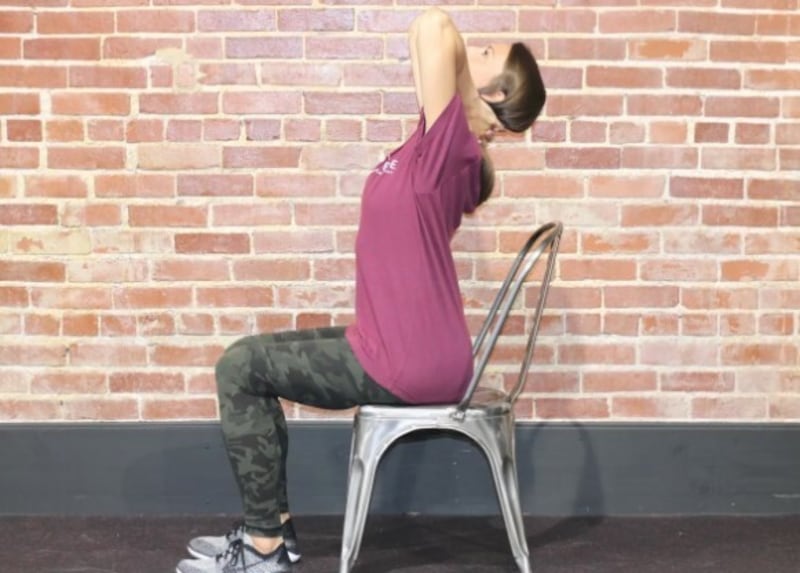
Exercise 3: Open Books
Purpose: To improve how the joints in your mid and upper back move in regards to rotational movements, to improve the function of your shoulder girdle, and to reduce discomfort in the neck and low back.
Instructions: Lie on your side, bend your knees to a comfortable position. Rotate your top arm up and over, rotate your trunk to the opposite side. Hold for 2 seconds and return to your resting position.
Frequency: 10 reps 1-3x/day
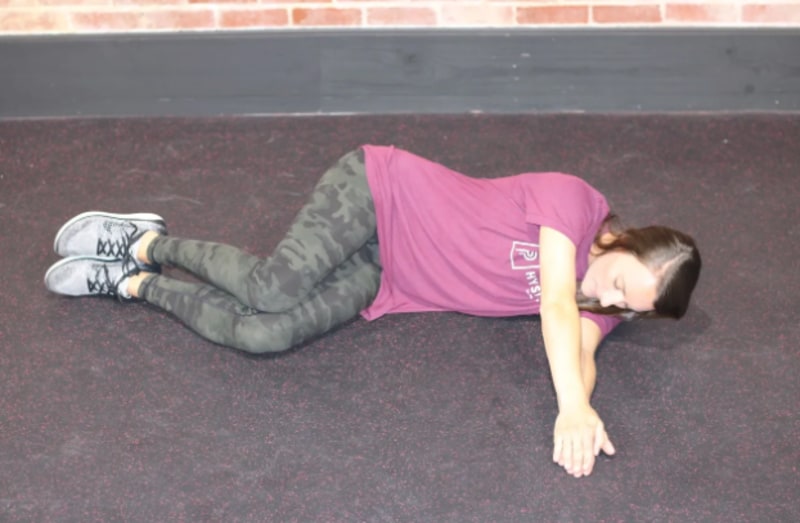
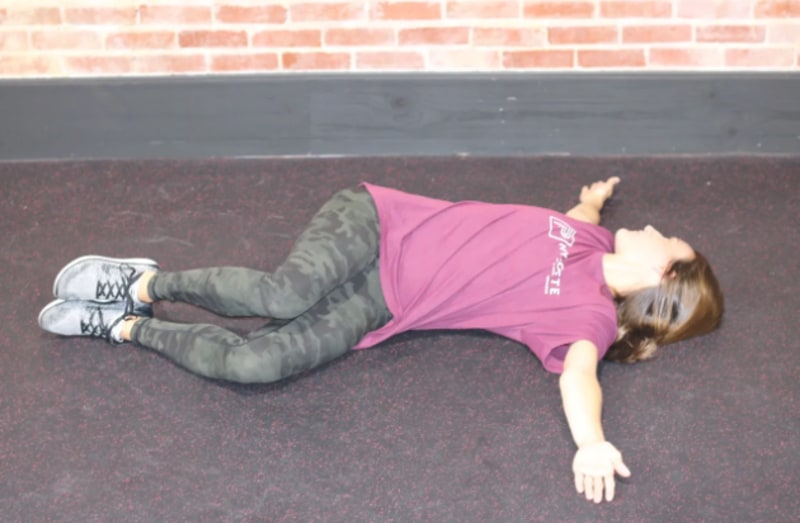
Exercise 4: Doorway Stretch
Purpose: To reduce tightness in the front of your shoulders and to improve your ability to “sit up straight” by reducing rounded shoulders.
Instructions: Place your hands in a doorway, step through with one foot until you feel a stretch in the front of your shoulders, hold 30 seconds, return to neutral.
Frequency: 2-3x/day
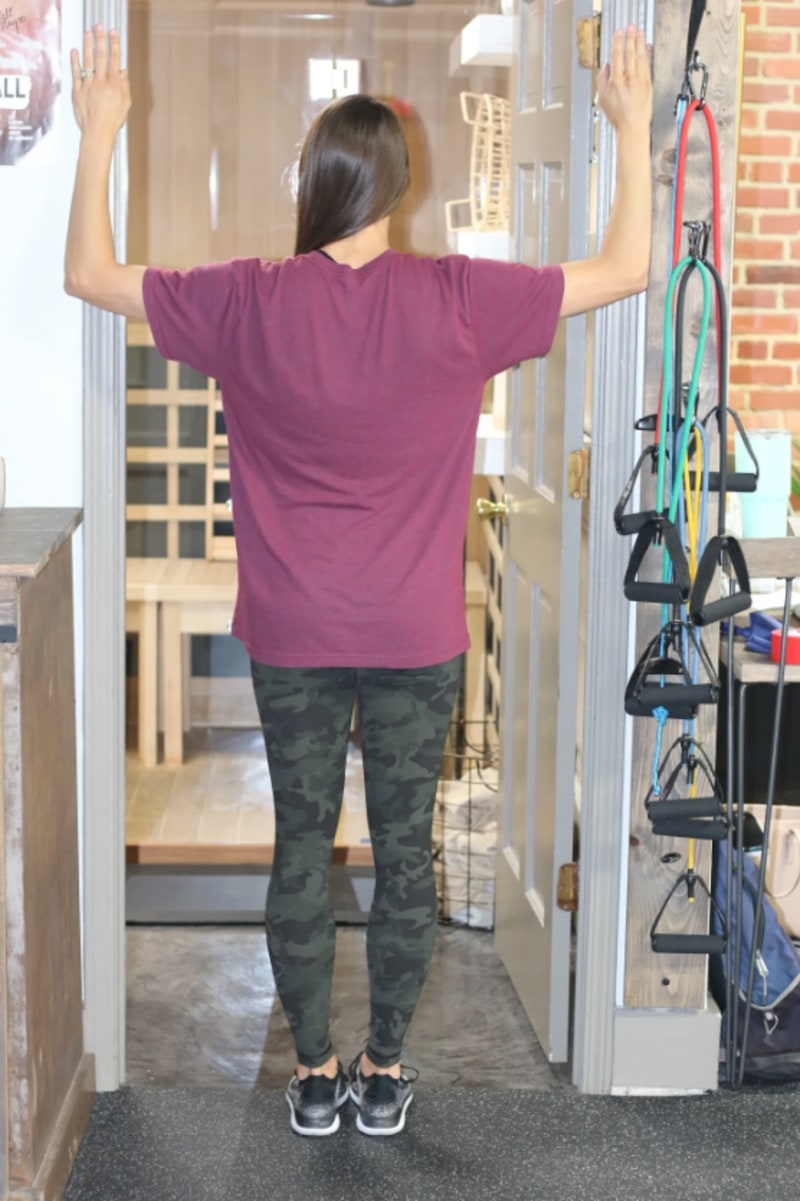
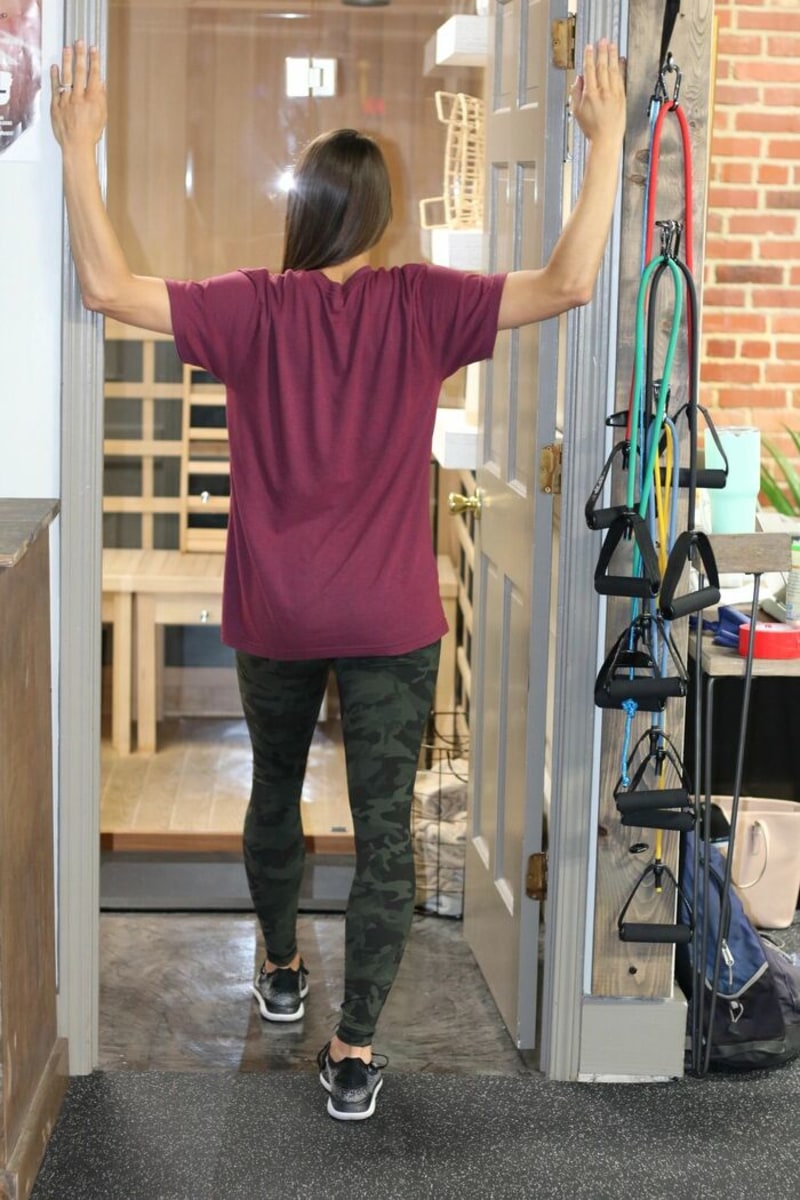
It is important to counteract the prolonged postures and repetitive movements that we perform throughout our day with exercises that put us in good posture in order to reduce the risk of injury and pain. As with any new exercise or stretching program, pay attention to your body. You might develop soreness if these movements are new to you. Some positions may bother your low back or shoulder if you have stiffness or a problem in these areas. Modify as needed.
If you continue to have lingering pain or develop any numbness or tingling in your upper extremities, it is important to seek advice from a medical professional. We continue to offer complimentary physical therapy screens in person and virtually at this time to help make recommendations to improve your physical well being. Please DM us or email us at [email protected] if you have any questions, or if you would like to schedule your complimentary screen.
Physiolete Therapy and Performance intends to provide information and education with the audiences health and safety in mind. The information on this website should not be used as a substitute for professional advice as circumstances vary from person to person. The information published on Physiolete Therapy and Performances website and social media is not to be interpreted as a recommendation for a specific treatment plan, product, or course of action. Exercise is not without risks as exercises listed on this website or exercise in general make result in injury. Injury includes, but is not limited to: acute injuries and/or re-aggravation of a pre-existing condition. Consult with a healthcare provider to reduce the risk of injury before beginning this or any exercise program. The information listed on Physiolete Therapy and Performance’s website is no way intended as a substitute for medical consultation. Physiolete disclaims nay liability from and in connection with this program. Remember when performing any exercise in general, if you begin to feel faint, dizzy, have physical discomfort you should stop and immediately consult a physician.

